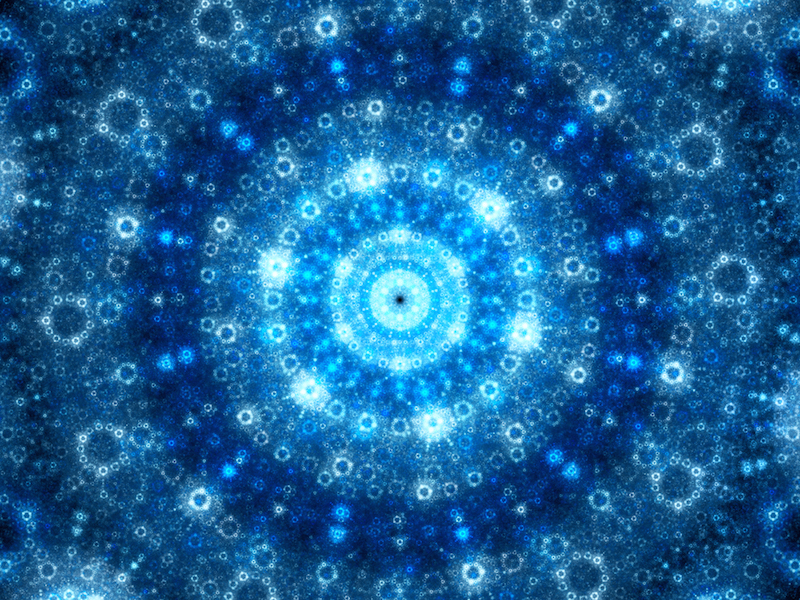
The New Year may also be a year of discoveries for physicists plumbing the deepest mysteries of matter.
Since 2013, when scientists at the Large Hadron Collider (LHC) confirmed they had discovered the Higgs boson, the particle that lends others mass, physics has been in a kind of limbo. The Higgs was the last missing puzzle piece in the Standard Model, the reigning model to explain the behavior of tiny particles. And yet, key questions about the universe still remained unanswered.
However, 2016 could be the year for some new discoveries. From finding new particles to explaining dark matter, here are some of the things physicists are most excited for in 2016. [Beyond Higgs: 5 Other Particles That May Lurk in the Universe]
1. New particle?
The biggest news in the particle physics world is the fleeting hint of a potential new particle found at two separate experiments at the LHC, the world's largest atom- smasher.
"There's some (extremely tentative) evidence for a new kind of particle about 800 times the mass of the proton — we'll want to see whether that signal gets stronger or fades away," said Sean Carroll, a physicist at the California Institute of Technology.
So far, the evidence is extremely preliminary — there's roughly a 1 in 4 chance that the signal is due to random chance, and not a genuine particle. Though that may sound pretty good to the layperson, physicists typically look for a "5-sigma" result, meaning the odds of the signal being a fluke are 1 in 3.5 million.
Sign up for the Live Science daily newsletter now
Get the world’s most fascinating discoveries delivered straight to your inbox.
If there is indeed a mysterious particle of this mass lurking in the universe, physicists had no idea it was there and had no theories that predicted such a particle. Since then, however, people have rushed to fill the void.
"There have been over 70 theory papers 'explaining' this" blip, said Sheldon Stone, a physicist at Syracuse University.
Either way, in the next year, each of the two experiments will get 10 times the data they have so far, so scientists will know whether it's a statistical blip or a real particle, Stone said.
2. Gravitational waves
Gravitational waves, or the ripples that emerge from the warping of space-time predicted by Einstein's theory of general relativity, have long been proposed to theoretically carry gravitational radiation. Scientists predict that the galactic smashup of neutron stars, supernovae and the Big Bang all leave traces of these gravitational waves in the universe.
However, these space-time ripples have only been glimpsed indirectly, and experiments designed to detect them, such as the Laser Interferometer Gravitational Wave Observatory (LIGO), have yet to see any hint of them. However, scientists shut down the LIGO for years and have spent that time fitting it with much more sensitive detectors. It finally turned back on in September of this year.
"The Advanced LIGO detector is now up and running, and might be able to see something soon," Carroll told Live Science in an email.
3. Dark matter
Up to 80 percent of the universe is made up of a mysterious form of matter that does not emit or absorb light, making it invisible to telescopes. This so-called dark matter seems to exert a gravitational pull on the luminous objects in the universe, yet no one knows what dark matter is made of or how it works. Yet there is some hope that this could be resolved in 2016, said Saurya Das, a physicist at the University of Lethbridge in Canada.
A number of underground detectors, from the SNOLab in Sudbury Ontario to the Gran Sasso National Laboratory in Italy, are working to spot dark matter directly. Many physicists assume that dark matter would be made up of weakly interacting massive particles, or WIMPS. These subterranean detectors use the Earth to absorb most of the cosmic rays that could obscure the faint traces of evidence for dark matter. Physicists would see the signs of dark matter WIMPs as clumps of them bounced off atomic nuclei in these subterranean detectors.
It's "harder to pinpoint when it might happen, but it could be sooner rather than later," Carroll said.
4. Other unanswered questions
Other experiments at the LHC should also confirm exotic particles made of existing subatomic particles, such as pentaquarks and tetraquarks, which are made up of quarks, Stone said.
And supersymmetry, the theory that every matter particle has antimatter partners, could be seen in other experiments at the LHC, Das said.
Beyond that, there are some longer-shot questions that could potentially be clarified or possibly even resolved in the coming year, Das said.
While scientists have confirmed that general relativity holds at relatively small scales, they still don't know if it holds across vast distances, known as cosmological scales, Das said. For instance, since physicists discovered that the universe was inflating (meaning that its expansion outward was accelerating), many have posited the existence of dark energy, a mysterious force that counteracts gravity to fling things outward. But another possibility is simply that general relativity breaks down at cosmological scales, he said.
Follow Tia Ghose on Twitter and Google+. Follow Live Science @livescience, Facebook & Google+. Original article on Live Science.

Tia is the managing editor and was previously a senior writer for Live Science. Her work has appeared in Scientific American, Wired.com and other outlets. She holds a master's degree in bioengineering from the University of Washington, a graduate certificate in science writing from UC Santa Cruz and a bachelor's degree in mechanical engineering from the University of Texas at Austin. Tia was part of a team at the Milwaukee Journal Sentinel that published the Empty Cradles series on preterm births, which won multiple awards, including the 2012 Casey Medal for Meritorious Journalism.










